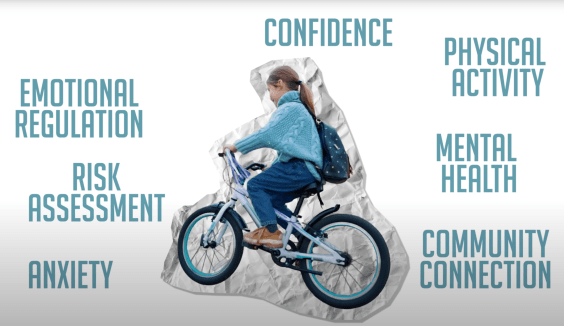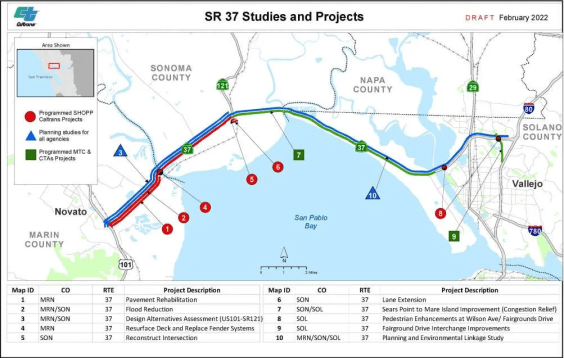“There’s an inverse proportion of the size of a transportation program to the amount of transparency,” says Deron Lovaas of the Natural Resources Defense Council. While anyone can easily find in granular detail anything they would ever want to know about where bike/ped money goes, and they can get a pretty good idea of what's going on with transit capital investments, highway spending is a black box -- and that's 80 percent of U.S. transportation dollars.
But that could change if an unsung provision of the new transportation bill, MAP-21, is implemented as fully as it should be.
Right now, finding information about highway projects is incredibly hard. Want to find out how much a certain project cost and what money was used to build it? Great. You can search “104(j)” in the Federal Highways Administration website and get reports from 2008 and 2009. Looking for anything less than three years old? Better luck next time, buster. Hoping for a searchable database? Here’s a scanned Excel spreadsheet. I hope you don’t mind that every state reports from a third to half of their spending as “other.” Want to drill down deeper than topline numbers for programs and states? You’re asking a bit much, don’t you think?
Meanwhile, the world is your oyster if you’re curious how states are spending the pocket change devoted to bike/ped. The Transportation Enhancements Clearinghouse lets you filter projects by state, type, and year on a digital database, going all the way back to the start of the Enhancements program in 1992 and updated through 2011.
Curious about the bike lane and sidewalk put in near Santa Fe High School in Alachua County, Florida, in 2009? It cost $86,511 total, consisting of $13,500 in federal funds, $67,963 in stimulus funds and a $5,048 local match. Would you like fries with that?
If only as much accountability were demanded of multimillion dollar highway projects as they were of $86,000 bike lanes.
Thanks to Section 1503(c) of MAP-21, it could get easier to hold states accountable for the highways they build. The section, titled “Transparency and Accountability,” says U.S. DOT will have to make expenditure data for highways and transit publicly accessible, organized by project and state, regularly updated “to reflect the current status of obligations, expenditures, and Federal-aid projects” – and it should be searchable and downloadable. And it should be submitted to Congress.
“This could have real, serious implications,” said Deron Lovaas, “but only if Federal Highways implements it seriously.”
He’d like to see a proportionate relationship between program size and accountability. “The highway database could be as transparent and analyzable as the Enhancements clearinghouse database,” Lovaas said. “It would be a game changer.”
Nick Donohue, policy director of Transportation for America, agrees it could be a big step forward. “This will give us insight about what projects are being built with federal dollars and will let us see if states are flexing money out of certain programs,” he said. “Today, FHWA has this information but won’t share it.”
To Donohue, that’s a key piece of this puzzle: The states already have to enter projects into a Financial Management Information System for FHWA. All that needs to change is for FHWA to post it online from time to time in a usable format. It requires no extra work from states.
And it would make it easier to track whether states are properly using their money. “I can’t ask questions and call you to task if I don’t know what you’ve done,” said Donohue.
Donohue wanted to know about a road-widening project in his hometown of Richmond, Virginia. Through his own investigation and personal networks, he found out that the builders had broken the project into two components: the widening and the traffic light synchronization, so that the latter could be funded with Congestion Mitigation and Air Quality Improvement program funds. But CMAQ isn’t supposed to fund widening projects. It funds items such as traffic light synchronization only if such measures can eliminate the need to do things like widen roads.
But without knowing all the right people, as Donohue does, how is the average taxpaying citizen to know if his or her state is misusing money?
Ideally, Lovaas says, there should be an app for that. He imagines the ability for any taxpayer to pull up on his phone any given capital investment that his taxpayer dollars cover in his city or region, including information about the project lead, cost overruns, environmental implications, and more. “That would rebuild trust,” Lovaas said. And all transportation experts agree that needs to happen in order for the public to agree to invest in infrastructure in the post-Bridge-to-Nowhere world.
Of course, opacity has its benefits for state DOTs. It keeps nosy citizens from asking too many pesky questions. “That’s the entry fee for more trust," Lovaas said. ”You’ll have some people looking around under the hood and saying, ‘Wait a minute, what’s that; why are we investing in that; why did this project make sense?’"
The Bureau of Transportation Statistics could be doing this work, Lovaas said, and in fact, this was part of its original purpose. “But the BTS website is not well organized,” he said, “and highway accounts, especially, are underrepresented in BTS data sets – even though they’re the biggest accounts.”
There is a National Transit Database that provides a one-stop shopping place for information on transit capital investments, allowing you to quickly zero in on a particular year for a particular agency. It relies on reporting from transit agencies, which could be a weakness, but transit providers tend to be pretty good about reporting since they benefit so much from federal funding.
Is it too much to ask that highways, which eat up the lion’s share of transporation dollars in this country, should have to stand under the spotlight a little more? “At the end of the day,” Donohue said, “these are taxpayer dollars. We the taxpayers have a right to know how they’re being spent.”







